Colombia is the land of celebrations. With 18 public holidays throughout the country – and two extra in Barranquilla for the famous Carnaval – visiting a festival is one of the best things to do while visiting Colombia!
The diversity of the country is at the core of its celebrations – from cumbia on the Atlantic coast to coffee traditions in the foothills to afro colombian history in the Pacific. And whatever you’re celebrating, Colombians never do anything halfway – we’re talking parades, music, and ever-flowing aguardiente.
In this article, I’ll break down some of the can’t-miss Colombian festivals and how to visit them. But why should you trust me? I’m currently on a mission to explore all 32 Departments of Colombia, so I’ve visited my fair share of festivals all over the country
This site uses affiliate links to share products that I use and love! If you click on one of the links I may receive a small commission at no additional cost to you. This helps keep my site up and running — thank you!
Colombia Quick Links
✈️ Flights – Use Kiwi.com or WayAway to find the cheapest and fastest flights to Colombia
🛏️ Accommodation – Find the best places to stay throughout Colombia on Booking.com
✅ Get Insured – I personally use Safety Wing Nomad Insurance for my travels all around the world! VisitorsCoverage is another great option. Check out my entire in-depth guide to safety in Colombia here.
🚗 Rent a Car – Find the best deals for a Colombia road trip on RentalCars.com
🗺️ Find Things to Do – Check out Get Your Guide or Viator for exciting adventures all around Colombia
☎ Buy a Sim – Airalo offers eSIMS for over 200 countries and regions
Looking to spend more time in Colombia? Check out my full three-week itinerary!
1. Barranquilla Carnival
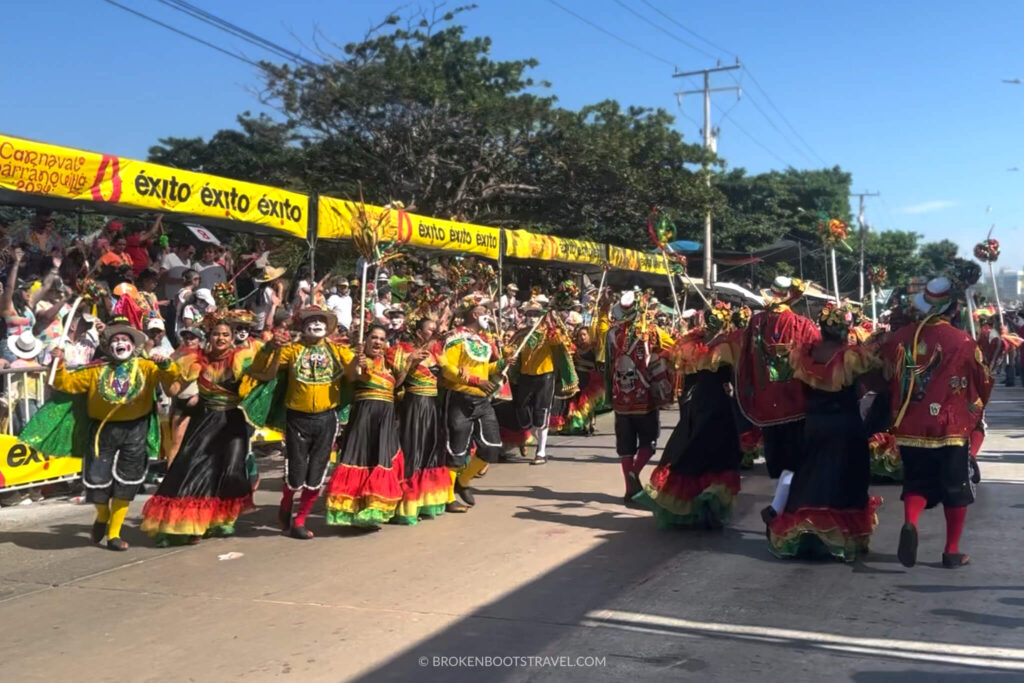
Location: Barranquilla, Atlántico
Dates: Annually, first week of February
The biggest Colombian festival of the year, Barranquilla Carnival is world-renowned for its multi-day celebrations. In fact, it’s the second-largest carnival celebration in the world, second only to Rio de Janeiro, and is a UNESCO Intangible World Heritage Event.
Barranquilla Carnival pays tribute to the diversity of Colombia, bringing together dance and music traditions from each of the country’s distinct regions. You’ll find everything from folk dances to musical performances to street parties where you can salsa dance the night away.
The multi-day event is officially held each year at the beginning of February, but in Barranquilla, Carnival is a lifestyle. While the Carnival celebrations officially begin with the Batalla de Flores parade, Carnival season in Barranquilla begins mid-January, with pre-Carnival events taking over the city. It’s a Colombian celebration that truly cannot be missed.
Want to go behind the scenes of Barranquilla Carnival? Check out my video all about the department of Atlántico, or read my extensive guide to Carnaval de Barranquilla here.
2. The Vallenato Festival
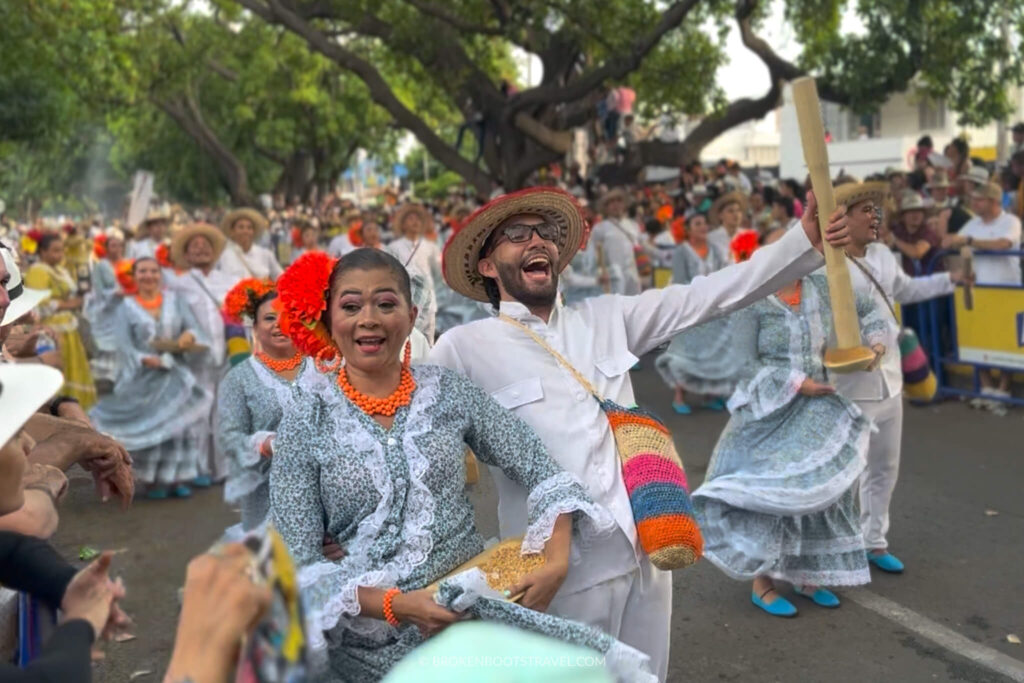
Location: Valledupar, Cesar
Dates: Annually, Last weekend in April
Vallenato is an intangible part of Colombia’s Caribbean culture, a musical style defined by its lively accordions and indigenous origins. In Valledupar – the origin and namesake of the music style itself – Vallenato has taken on a life of its own with the annual Festival de la Leyenda Vallenata.
This four-day festival celebrates the history and culture surrounding the music style, not to mention brings together some of the most notable names in the genre. It’s one of the biggest Colombian festivals of the year and a true celebration of costeño culture, from traditional dances to musical performances to all-night-celebrations fueled by aguardiente and Poker.
Vallenato music is defined by three instruments – the accordion, the box drum, and the guacharaca rasp. The music style developed as a form of oral storytelling in the region, a combination of traveling farmers and indigenous groups from the neighboring departments of Magdalena and La Guajira. Many of the events of the Vallenato festival pay tribute to these origins, from improv competitions to theatrical performances.
The Vallenato Festival is held annually at the end of April in the city of Valledupar. Check out my video to learn more about the history and events surrounding the Vallenato Festival, or read my extensive guide to visiting the festival!
3. Feria de las Flores
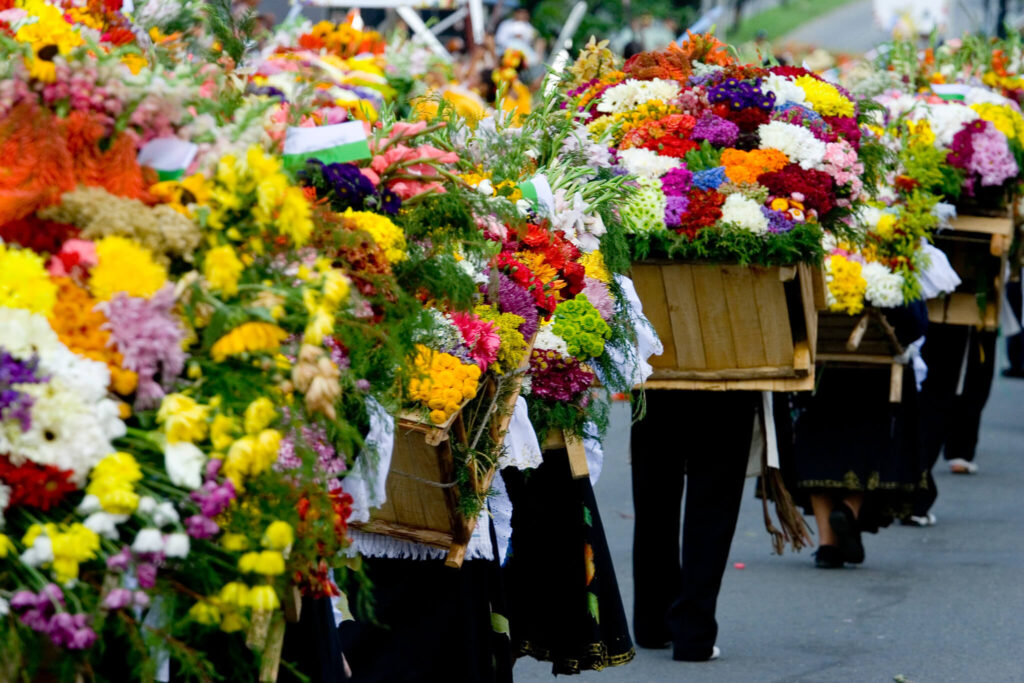
Location: Medellín, Antioquia
Dates: Annually, first two weeks of August
The Feria de las Flores, or the Flower Festival, is an unmissable event in Colombia’s second city of Medellín. This event is characterized by thousands of flower arrangements throughout the city and a number of parades, displaying the creativity of local flower growers.
While the official festival lasts around ten days, the main event is the Desfile de los Silleteros. This parade gives visitors an opportunity to witness intricate flower arrangements as silleteros carry them on their backs through the streets. Traditionally, the silleteros were porters who would carry colonial officials on intricate chairs along their backs, and these days, the parade pays tribute to the history of the region.
There’s plenty to see and do throughout the city during the festival as well, as many locations around the city decorate with flowers in participation. The Botanical Gardens of Medellín hosts a flower exhibition during the festivities where visitors can go and learn about the many flowers native to the region and wider Colombia.
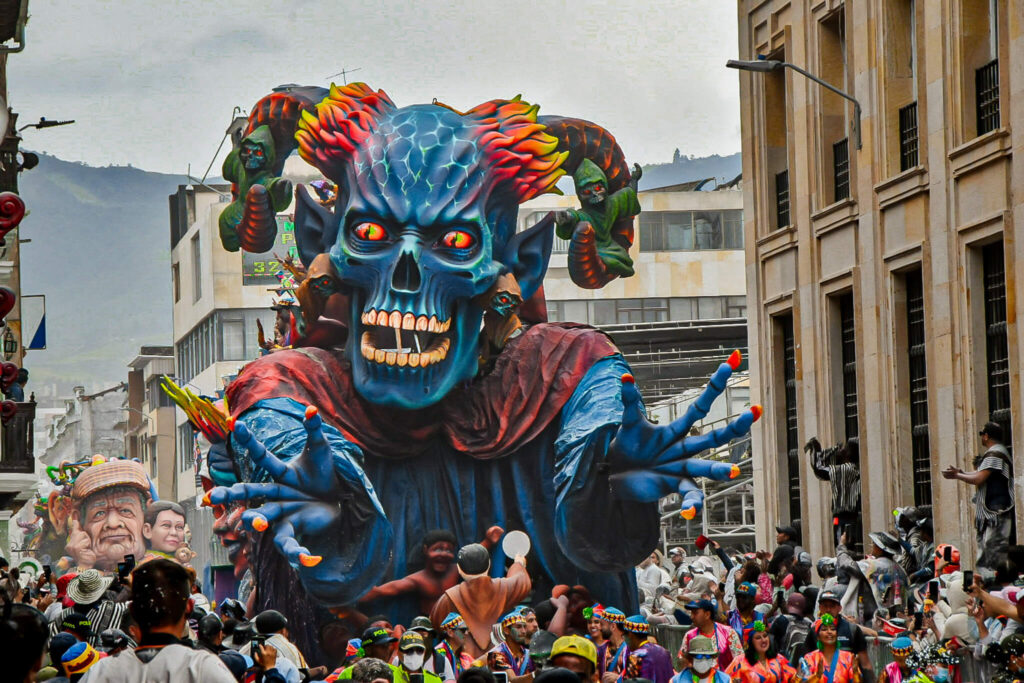
Location: Pasto, Nariño
Dates: Annually, first week of January
Carnaval Blancos y Negros (White and Black) is Colombia’s second-largest carnival festival. The festival is held annually in the city of Pasto, the largest city near the Colombia/Ecuador border. It’s one of the oldest festivals in Colombia and rooted in centuries worth of history.
Like other carnival celebrations around the country, Blancos y Negros features dances, floats, and theatrical performances, but this celebration is home to a number of unique events paying tribute to the festival’s history. While it typically takes place during the first week of the new year, preparations for the event are a major part of the Christmas celebrations in the region.
The celebration originated during the Spanish rule of Colombia, when slave masters would join their slaves for carnival festivities by painting their faces black. The following day, the slaves would paint their faces white for continued celebrations. These days, these origins are recognized by smearing black and white paint on one another throughout the festival.
5. Feria de Cali
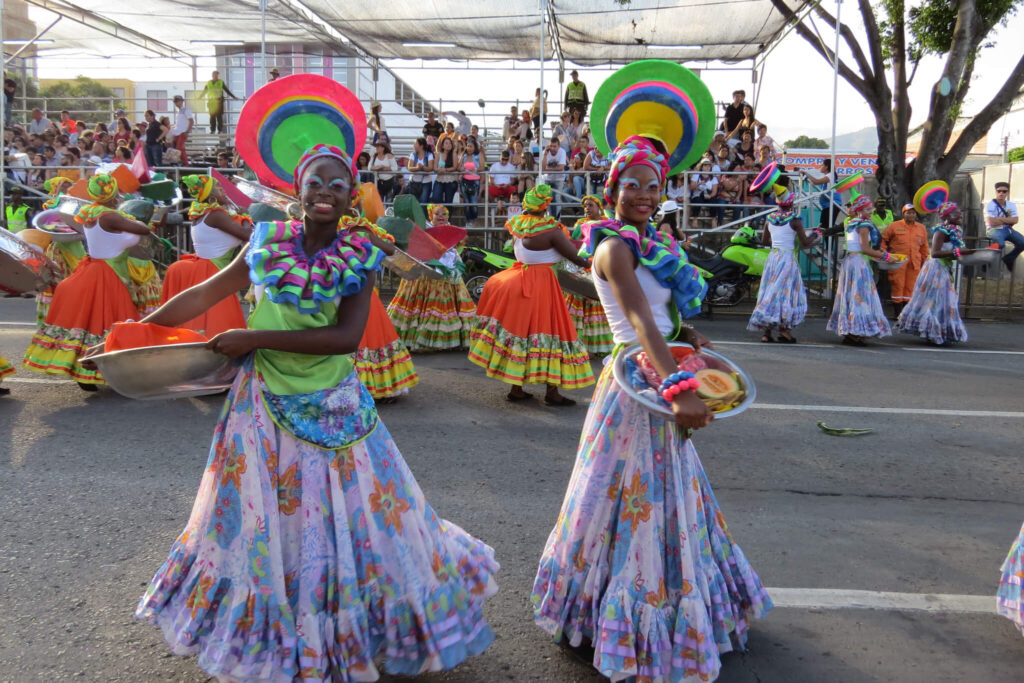
Location: Cali, Valle de Cauca
Dates: Annually, December 25th-30th
The Feria de Cali (Cali Fair) is one of the longest-standing Colombian celebrations, and set in the salsa capital itself, there’s no better place to dance the night away. Taking place every year in between Christmas and New Year, this celebration is home to dancing, music, concerts, and more!
The Feria de Cali originally developed around Spanish-style bullfights, but has now become much more of an homage to the dance style that formed the city. During festival season, some of the biggest names in salsa come to town, and visitors to the festival can attend the numerous events included in the street fair. You’ll find everything from salsa parades to classic car shows to events recognizing the history and significance of the city.
The festival generally lasts a few days and is one of the biggest events of the region. Whether you’re already a salsa fanatic or simply curious about the dance style, this festival is sure to have you on your toes!
Spending more time in Cali, Colombia? Check out these 10 unique day trips from the city!
6. Yipao
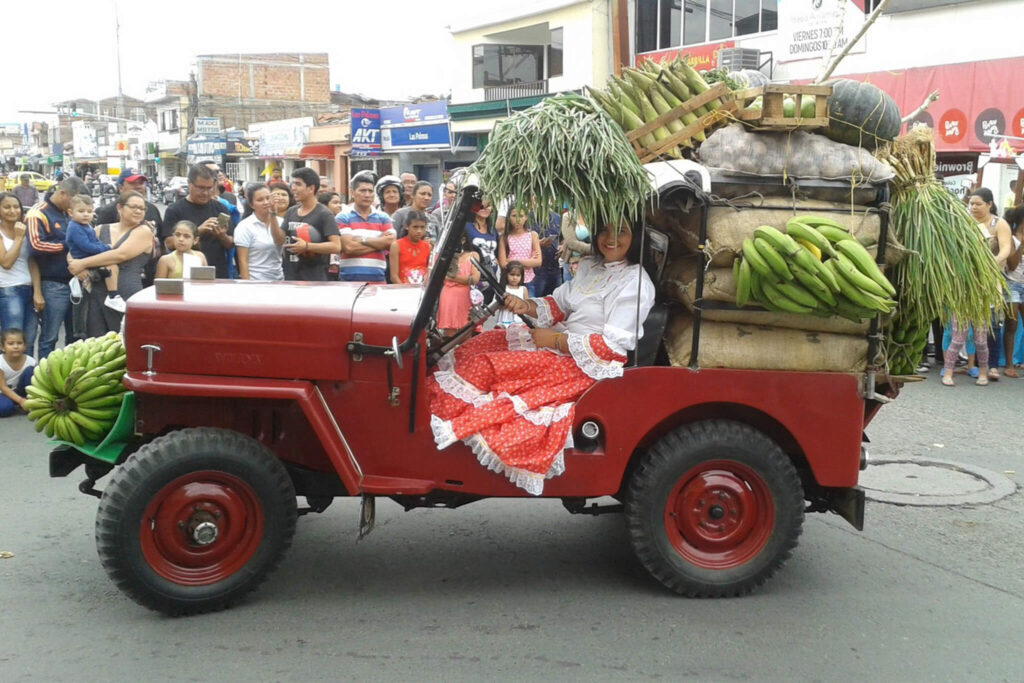
Location: Calarcá, Quindío
Dates: Annually, in the month of June
Colombia’s coffee region is obviously home to some of the best coffee in the world, but also one of the most unique celebrations in the country – Yipao. Held annually in the town of Calarcá, just outside the city of Armenia, this festival is known for its Jeep Willy parade, where decorated Jeeps perform tricks as they parade down the street.
Jeep Willys first came to the country in the 1940s, following a production surge in wartime USA, but the durable vehicles soon became a preferred means of transportation amongst the winding roads of the eje cafetero. In fact, they’re still one of the best ways to visit the stunning Cocora Valley from the town of Salento – the colorful pueblo that inspired Encanto!
Yipao is held annually in the month of June, and brings together a variety of traditions from around the coffee region. The main event is the Yipao parade, where Jeep Willys are decorated and weighed down with nearly 2000 kilos of coffee beans, tipping the cars backwards so they can perform wheelies. It’s the can’t-miss event of Colombia’s coffee region!
Want to learn more about the coffee region of Colombia? Check out my video all about the department of Quindío!
7. Semana Santa
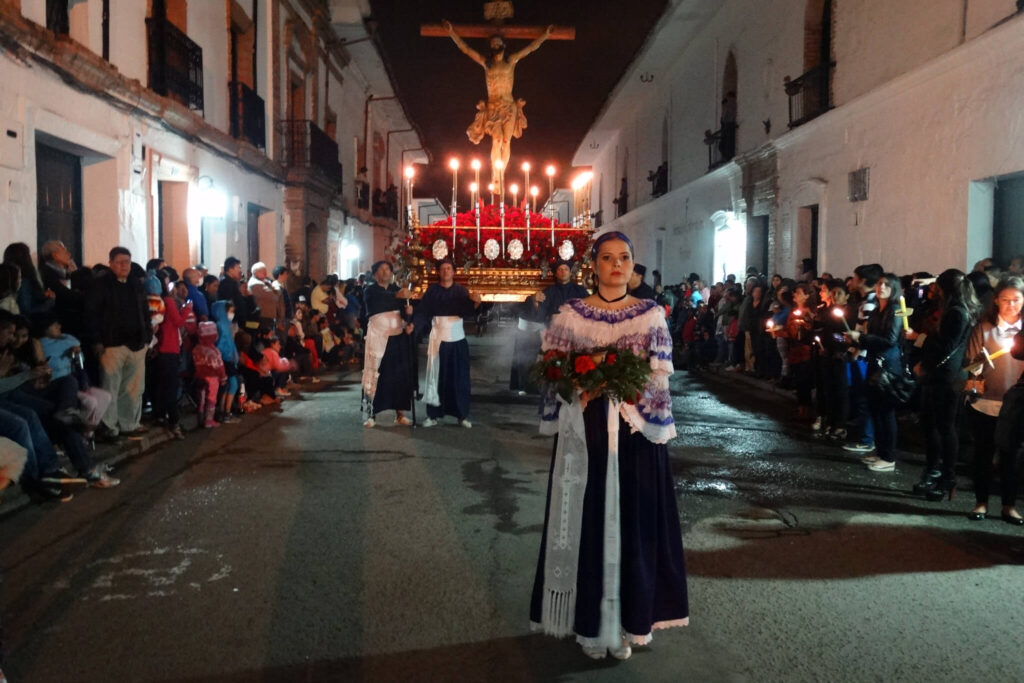
Location: Country-wide
Dates: End of March/Beginning of April
Semana Santa, or Holy Week, is one of Colombia’s major annual celebrations. Representing the week leading up to Jesus’ resurrection, it’s the most important religious celebration in the country. If you find yourself in Colombia during Semana Santa, you’re practically guaranteed to find celebrations, no matter where you are!
However, some towns throughout Colombia are recognized for their extraordinary Semana Santa celebrations, which often consist of processions, music, and traditional dress. One of the best known Semana Santa celebrations takes place in the city of Popayán, known as the “white city” for its white colonial architecture. Large processions take place throughout the week, and millions of visitors come to participate in the events.
Another one of the most notable Semana Santa celebrations takes place in the town of Mompox in the Department of Bolívar. With the first Semana Santa celebrations taking place in the city in 1564, it’s one of the oldest Colombian celebrations in the country.
An off-the-beaten-track location to celebrate Semana Santa is actually in the town of Cienaga del Oro, located in Colombia’s department of Córdoba. This tiny town is revered nationwide for their Holy Week celebrations, and actually has a year-round museum where visitors can learn about the traditions surrounding the celebrations.
8. Noche de Velitas
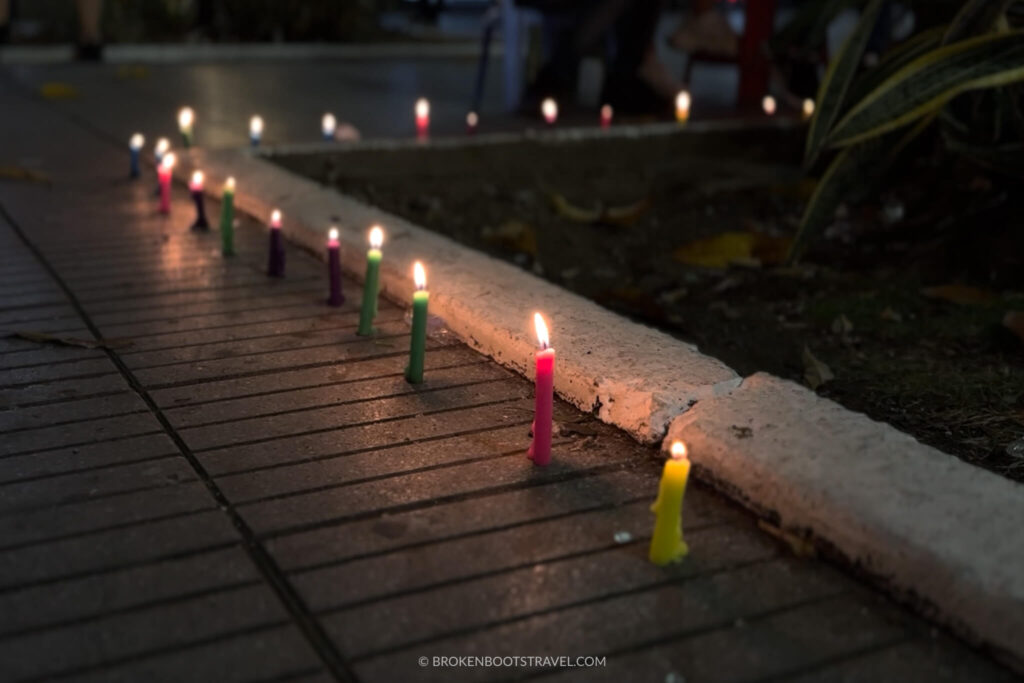
Location: Country-wide
Date: December 7th
Noche de Velitas, or “Night of the Little Candles,” is a country-wide celebration that takes place annually on December 7th. Marking the beginning of Christmas holidays in the country, people light candles and lanterns in the streets, filling the cities with light. The festival celebrates the feast of the Immaculate Conception of the Virgin Mary, an important religious celebration in Colombia.
The festival is celebrated in different ways throughout the country, with some cities hosting processions and parades to accompany the candle-lined streets. One of the most notable celebrations takes place in the city of Medellín with the accompanying “Parade of Myths and Legends,” where visitors are invited to learn about different Colombian legends through parades and performances. The parade is finished off with fireworks, officially marking the beginning of Christmas in Medellín.
Another notable celebration takes place in the town of Quimbaya, where family units design lanterns that are entered into a contest in a display of creativity and light. The lantern festival is one of the most important celebrations in Quimbaya and one of the most notable recognitions of Noche de Velitas in the country.
9. Independencia de Cartagena
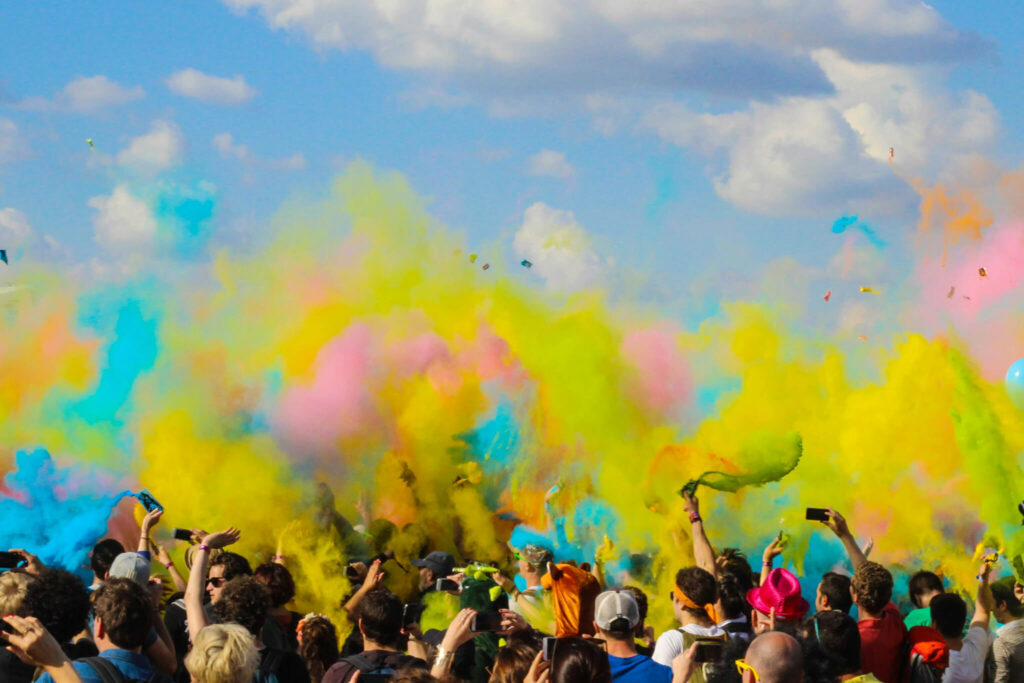
Location: Cartagena, Bolívar
Date: November 11th
The Caribbean city of Cartagena, Colombia is known for its colorful colonial architecture and beautiful beaches, but it was also the first province to gain freedom from Spanish rule, marking a significant moment in the Colombian fight for freedom. As such, Cartagena’s independence is celebrated throughout the country on November 11th every year, but the best place to celebrate is in the city of Cartagena itself!
This festival is usually centered around parades, where spectators gather to watch a variety of traditional dances, as well as floats carrying the candidates for Miss Colombia. The floats are also known for their live music, displaying Colombian rhythms from champeta to cumbia!
While the main festival takes place on November 11th, celebrations continue throughout the week in the city of Cartagena. It’s not uncommon to see people celebrating all week long – spraying colorful foam and tossing rainbow powder in the air in a celebration of Colombian liberation.
10. Las Fiestas de 20 de Enero
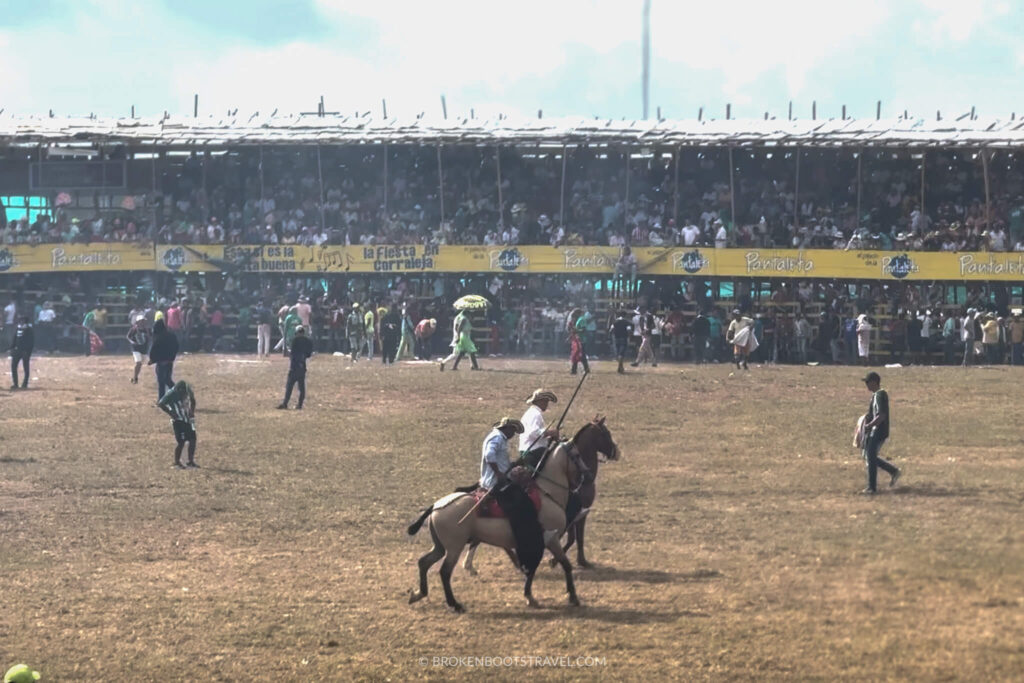
Location: Sincelejo, Sucre
Dates: Week of January 20th
Las Fiestas de 20 de Enero are a little off the tourist trail, but certainly one of the most unique Colombian celebrations on this list. Taking place in the city of Sincelejo, the capital city of the department of Sucre, the celebrations are perhaps most well-known for their corralejas, or Colombian-style bullfights.
While the corralejas are certainly a controversial topic, even within Colombia, there is no denying that these celebrations are one of the most unique events in the county. Taking place in a circular stadium, multiple bullfighters participate at once, as compared to the single fighters in Spanish-style bullfights. The bullfighters are also known for the number of tricks they perform during this adrenaline-packed celebration.
Besides the corralejas, Las Fiestas de 20 de Enero are also centered around fandango, or a traditional cumbia-based dance style from the region. Competitions are held throughout the festivities, and a queen is crowned at the end of the celebrations. It’s certainly a unique cultural event the likes of which are not found anywhere else in the world.
Why Visit Colombia?
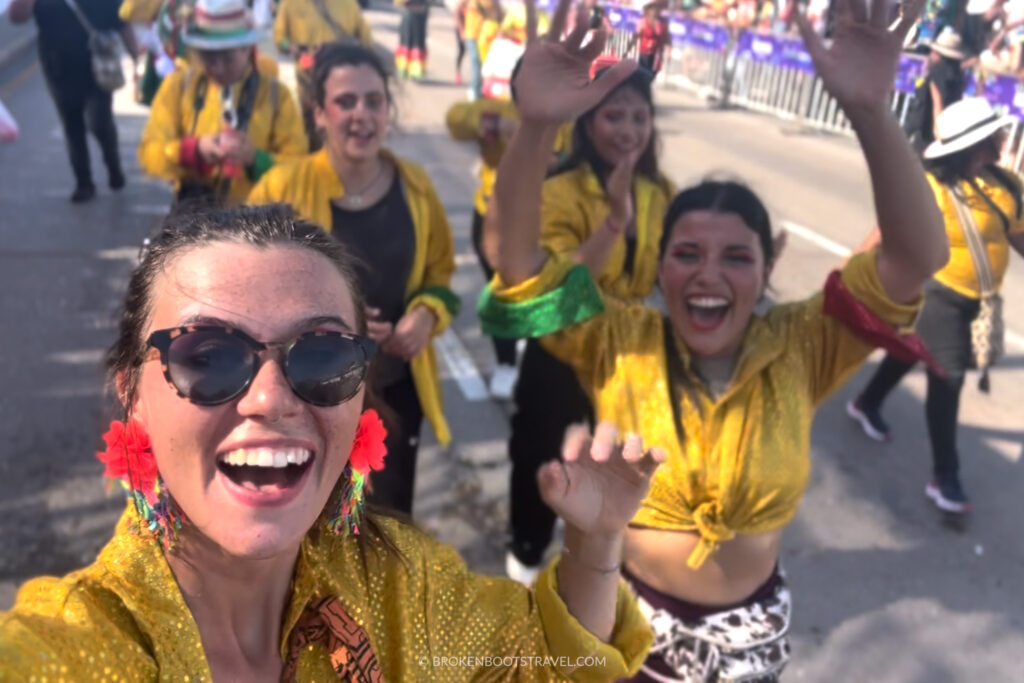
Colombia is one of the most ethnically, culturally, and geographically diverse countries in the world, and many Colombian celebrations are centered around this rich cultural identity. From the crystal-clear water of San Andres Island to ruins buried deep in the jungle, there’s plenty worth celebrating in this extraordinary country.
What Colombian festival would you be most interested in visiting? Or which Colombian festival did I miss? Let me know in the comments, and enjoy celebrating!
Have limited time to spend in Colombia? Check out my one-week itinerary to Bogotá and Medellín!
What to Pack for Colombia
Planning a trip to Colombia? Consider adding some of these essentials to your suitcase for a truly epic trip!
💧 Filtered Water Bottle – Save on the single-use plastic and protect from parasites!
🧥 Heavy-Duty Rain Jacket – For the ever-changing Colombian weather!
🎒 Anti-theft Backpack – Perfect for exploring big cities or trekking in the jungle
🧖♀️ Microfiber Travel Towel – A go-to travel essential anywhere in the world!
🔌 Portable Charger – Keep your phone charged out on the go
🔐 Mini Padlock – Perfect for securing your backpack or locking up your items at the hotel
🔋 Universal Travel Adapter – Charge all your devices anywhere in the world!
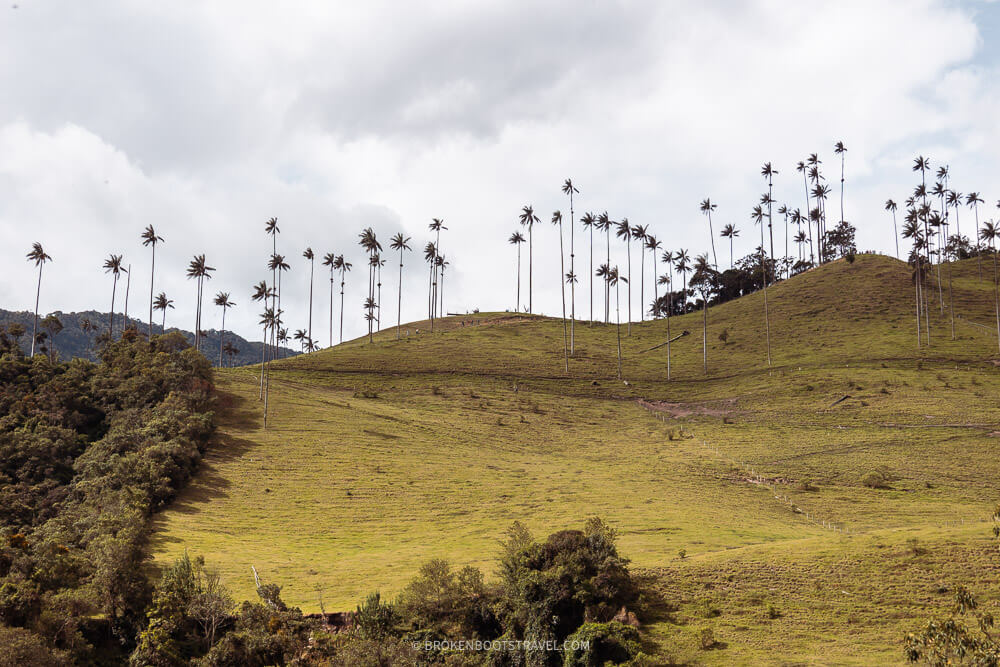



Virginia Taylor (Ginna) is a travel writer and photographer exploring the world until her boots wear through. She’s currently on a mission to explore all 32 departments of Colombia, though she formerly called the Middle East home. Want to know more? Visit the About Page.
Pingback: A Tourist's Guide to Barranquilla Carnival
Pingback: A Gringo's Guide to the Vallenato Festival - How to Plan Your Trip!
Pingback: The 10 Best Day Trips from Cali, Colombia - Broken Boots Travel
Pingback: Christmas in Colombia: How to Celebrate the Holiday Season!
Pingback: Traveling to Colombia: A Comprehensive Guide to Safety, Culture, and Adventure - dating and traveling
Pingback: Unlocking the Secrets: A Comprehensive Guide to Dating Colombian Women - dating and traveling
Pingback: Colombian Festivals and Celebrations - All About Colombia
Pingback: Colombian Festivals and Celebrations | gotravelyourself.com
Pingback: Colombian Festivals and Traditions